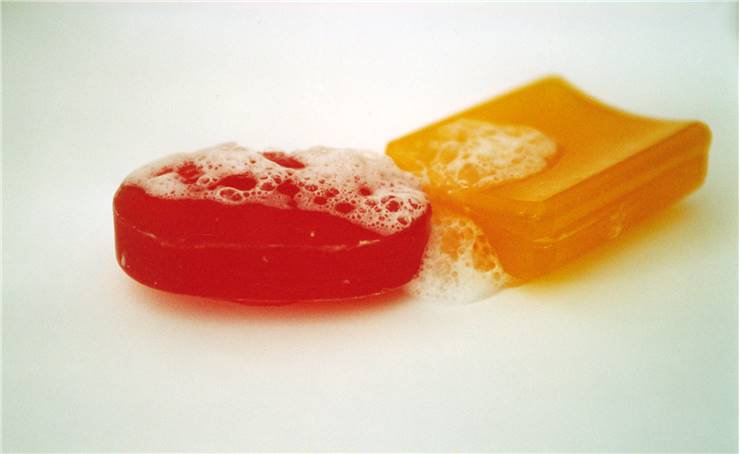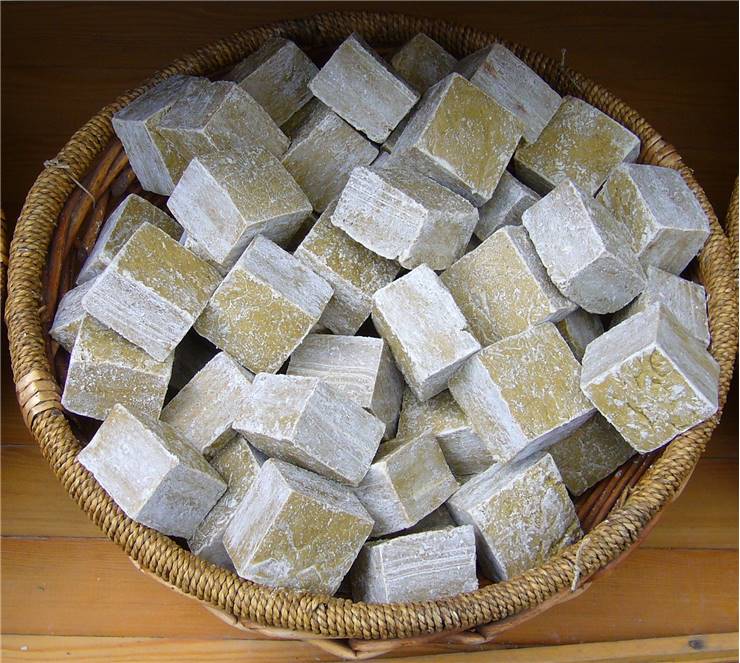The History of Soap - When Soap Became Popular?
The first recorded evidence of the manufacture of soap-like materials dates back to around 2800 BC in Ancient Babylon. Babylonians discovered the basic method of making soap (fats boiled with ashes and water). Soap was used mostly in the textile industry.
The Ebers papyrus (Egypt, 1550 BC) describe how animal and vegetable oils were mixed with alkaline salts to produce a soap-like substance and mention that soap was used for threatening sores, skin diseases as well as washing.
The ancient Greeks were known to wash without soap. They preferred to wash with water, blocks of clay, pumice, sands and ashes and then to anoint themselves with oil. In the second century AD, Galen, the famous Greek physician, recommended washing with soap as a preventive measure for skin diseases.
It is believed that Romans cleaned their bodies by rubbing abrasive substances, like sand or pumice, over the skin and then used sticks to scrape off the grime and gravel. Regardless of the end uses of soap, soap became popular throughout the Roman Empire. The ruins of Pompeii, one of the cities destroyed by the volcanic eruption of Mt. Vesuvius in 79 A.D., revealed an entire soap factory.

Ancient Germans and the Gauls mixed ashes with animal fat to produce soap, and they used it to decorate their hair.
Arabic chemists were the first one to produce soaps made from vegetable oils (such as olive oil), aromatic oils (such as thyme oil) and lye. From the beginning of the 7th century, soap was produced in Nablus, Kufa and Basra. They made perfumed and colored soap, some of the soaps were liquid and others were solid. They also made special soap for shaving.
By 1200 AD, Marseilles, France and Savona, Italy became soap making centers. In the 8th century, soap making was well-known in Italy and Spain where soap was made with goat fat and Beech tree ashes. During the same period, the French started using olive oil to produce soap. Eventually, fragrances were introduced and soaps for bathing, shaving, shampooing and laundry began to be made.
From the 16th century finer soaps were produced in Europe using vegetable oils (such as olive oil) as opposed to animal fats. Many of these soaps are still manufacture, both industrially and by small scale soap makers.
Due to a better understanding of the role of hygiene and the promotion of popular awareness of the relationship between cleanliness and health, industrially manufactured bar soaps became available in the late eighteen century. The big leap in commercial soap making was two discoveries by French chemists Nicholas Leblanc and Michael Chevreul around the turn of the 19th century. In 1791, Leblanc patented a method of making sodium carbonate or soda ash from commonly available salt. In 1811, Chevreul discovered the relationship and chemical nature of fatty acids, glycerin, and fats.
.Andrew Pears began manufacturing a high-quality, transparent soap in 1789 in London. William Gossage manufactured low-price good-quality soap from the 1850s. Robert Spear Hudson started producing a soap powder in 1837.
The development of synthetic detergents in Germany in 1916 made another breakthrough in soap making chemistry. Another well known soaping center was The Castille region of Spain, responsible for making the first, hard, white bars of olive oil soap. Castille soap is still known today like soaps made with all, or mostly all, olive oil.

Commercial soap, as we know it today, came into existence during WWI. After the Great War and until 1930's, a method called batch kettle boiling was used for soap production. Shortly thereafter, continuous process that decreased soap making production time to less than a day was introduced and refined by Procter & Gamble. Continuous process is still used by large commercial soap manufacturers.

